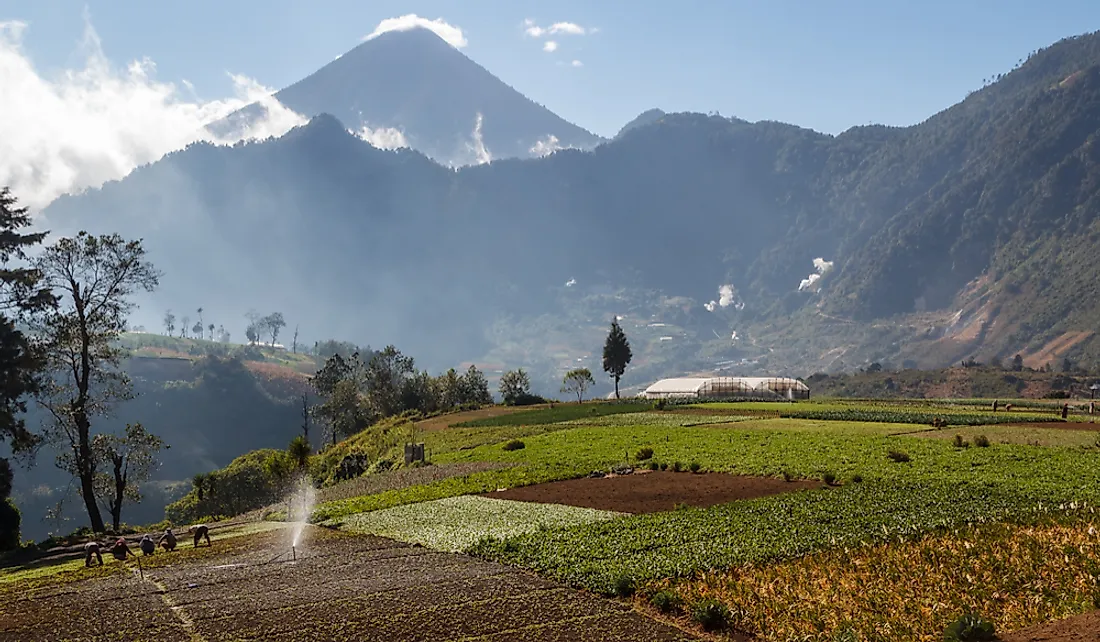What Are The Major Natural Resources Of Guatemala?

Officially known as the Republic of Guatemala, Guatemala is a country that is situated in Central America. Guatemala has an area of about 42,042 square miles and its capital city, which doubles as the largest city, is Guatemala City. In 2018, the nation’s nominal gross domestic product (GDP) stood at around $82.356 billion while the purchasing power parity was $145.514 billion. These figures make Guatemala the strongest economy in the region. The nation is not endowed with great quantities of some of the things that have come to be associated with natural resources such as precious metals. However, the country still has some natural resources that have played a huge part in driving the economy. Some of these resources include petroleum, land for agriculture, some small mineral deposits, water, and tourist attractions.
Tourism in Guatemala
Tourism is one of the country’s major drivers of the economy with the industry bringing in billions every year. For example, in 2008, the sector brought the country around $1.8 billion. On average, Guatemala gets about two million tourists in a year from all over the world. Water travel in recent years has also served to drive the number of visitors up. In previous years, tourism was not as big of a sector as it is currently. However, as more people become aware of the beauty and potential that the country has to offer, the number of visitors has gone up.
The visitors are drawn to the country by the multitude of natural resources in the form of ruins that go as far back as to the times of the Mayans. To date, archaeologists have discovered at least 4,400 ruins with more being discovered on a daily basis. Some of these archaeological sites belonging to the Mayans include Tikal in the Petén, the City of Guatemala, and Iximche in Tecpan Chimaltenango. Other ruins include El Mirador, Mixco Viejo, El Ceibal, Quirigua, Yaxha, and thousands more.
The traditions and cultures of the people themselves are also tourist magnets. This culture has been preserved in museums for everyone to see. In addition, the culture, especially the religious aspect, is preserved in the monuments that are located in the city of Antigua Guatemala. These monuments include the Cathedral of Santiago (Parish of San José), Santo Domingo Monastery, Santa Catalina Virgin and Martyr, and many more. National parks and similarly interesting protected areas (like the Maya Biosphere Reserve) are also popular with tourists. In fact, due to their importance, some of the sites, such as the city of Antigua Guatemala, have been designated as UNESCO Cultural Heritage sites.
Agriculture in Guatemala
Agriculture is also a crucial sector in the economy of the nation with the country being a major exporter of a number of products. For example, Guatemala leads globally in the production and export of cardamom. As it stands, at least 60% of the exports from Guatemala are accounted for by agriculture. In addition, at least half of the nation’s labor force works in the agricultural sector. Other major exports aside from cardamom include fruits, flowers, and vegetables. Other examples include palm oil and sugar cane while there are plans for the legalization of drugs like marijuana and poppy so that they can be exported. As from 2013, the global demand for both sugarcane and palm oil has gone up, which has seen most farmers shift to the production of these two products.
As is the case in other countries, farming is divided into subsistence (small-scale) and large-scale farming. Most of the small-scale farmers practice agriculture in the less fertile highlands while huge landowners do so in the fertile lowlands. The small-scale farmers mainly grow food for consumption, which is mainly maize and beans, as well as some fruits and vegetables. On the other hand, large-scale farmers produce vast amounts of export crops such as bananas, palm oil, coffee, rubber, and sugar cane.
In recent years, the government has been encouraging more farmers to grow non-traditional exports in order to open up new export opportunities. Some of these new crops include fruits (like mangoes and berries), vegetables (like snow peas and broccoli), and organic crops like coffee.
Energy and Mining
Since the early period of the 1980s, the country has been exploiting petroleum deposits in the Petén. The deposits have been crucial in helping the energy needs of Guatemala as well as added a new export commodity. Unfortunately, those deposits are being depleted at a fast rate.
In the early stages of the 21st century, the nation also had some mineral deposits including nickel, iron, gold, lead, and antimony. Most of the mining is done in the country’s western and northeastern sections, which has led to the creation of several quarries and open pits. The creation of open pits and other forms of environmental degradation has led to a number of criticisms and complaints. These complaints arise from both the local and the international community, which, in some cases, have forced the military to intervene.
Most of the nation’s energy comes from three main sources namely petroleum, fuelwood, and hydroelectric power. In some parts of the country, especially the rural and populated areas, fuelwood is the most popular source of energy. In those parts, fuelwood is used for almost everything including cooking, lime production, heating ceramic ware, and heating.
Water resources in Guatemala have increased hydropower production immensely from 2.6 GWh in 2016 to almost twice this figure (4 GWh) in 2017. In addition, between 2010 and 2017, the country attracted investors in the energy sector to tap into other resources. For example, it generated about $176 million to tap into the solar resource for the production of clean energy. An additional $271 million was also generated for tapping into the water resources.











